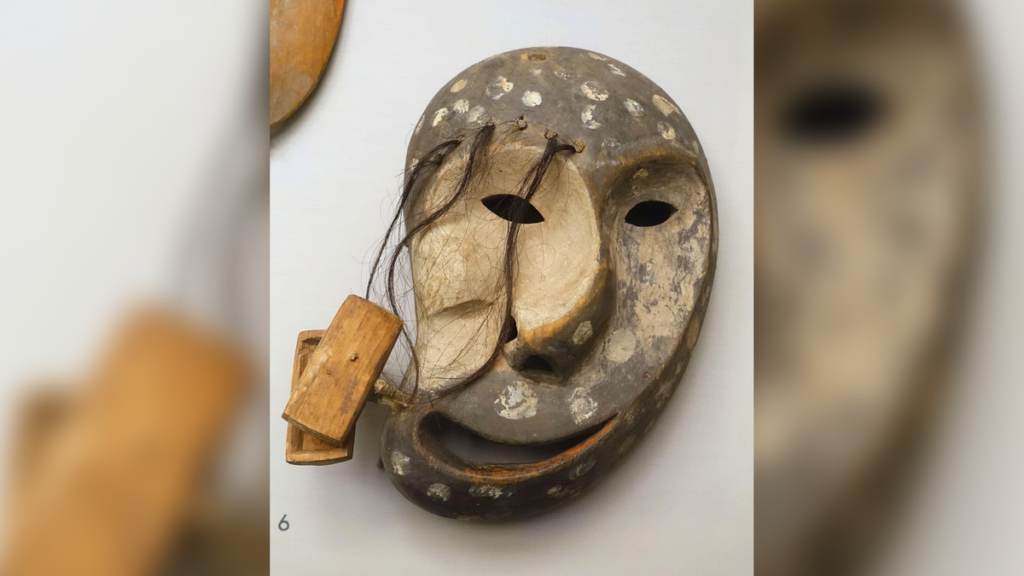
Name: Yup’ik spirit mask
What it is: A decorated mask carved from driftwood
Where it is from: Southwestern Alaska
When it was made: These masks date to at least the 16th century; the one photographed above dates to 1885.
Related: Croesus stater: The 2,500-year-old coin that introduced the gold standard
What it tells us about the past:
The Yup’ik people, whose ancestors arrived in southwestern Alaska around 800 years ago, are known for their elaborate and often-fantastical-looking masks. But this artistic tradition was nearly eradicated in the late 1700s, as Russian missionaries likened the masks and their associated ceremonies to witchcraft.
Yup’ik masks vary dramatically in size and shape, anthropologist Dorothy Jean Ray wrote in her 1967 book “Eskimo Masks: Art and Ceremony,” with some as small as 6 inches (15 centimeters) and others up to 4 feet (1.2 meters) long. These masks were traditionally carved from spruce driftwood found along the coast, with natural fibers added for movement — undulating feathers of the sea duck, rawhide or baleen for appendages, or human or caribou hair blowing in the wind. Color was added from natural pigments, such as white fingerprint dots created from white clay.
The first historic reference to Yup’ik masks was in a Russian traveler’s diary written between 1764 and 1766, in which the man described the Yup’ik dancing in the nude while wearing masks.
Masks were an essential part of Yup’ik religious practice, according to Ray, and no two were alike. Typically, the Yup’ik shaman would commission a skilled carver to create a mask based on a dream or vision. Villagers then wore these masks during dances and festivals, such as whaling and caribou ceremonies connected to hunting practices.
Each mask represented a particular spirit and was a part of a larger story woven by the shaman, who was the interpreter of the world’s unknown forces. Highly distorted, human-face-like masks were often used to represent other mythological beings; an upturned mouth represented male beings, while a downturned mouth represented female beings.
MORE ASTONISHING ARTIFACTS
By the late 1700s, according to Ray, Russian priests and missionaries reportedly destroyed as many Yup’ik masks as they could find in their zeal to convert the Indigenous people to Christianity. Some masks survived, only to be collected by American naturalist Edward W. Nelson beginning in 1877 and shipped to museums in North America and Europe.
It is unclear how old the practice of Yup’ik mask making is, as the custom following their use in a ceremony was to dispose of the masks in the tundra or burn them, according to Yup’ik culture bearers. But archaeologists found evidence of masks dating to the 16th century at a prehistoric site in the village of Quinhagak near the Bering Sea.
Although Yup’ik mask making was demonized by missionaries in the 17th and 18th centuries, the practice is being revitalized today as local community members reclaim their precolonial practices.
